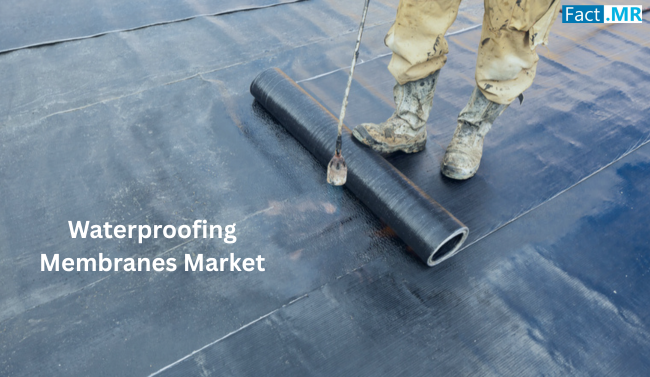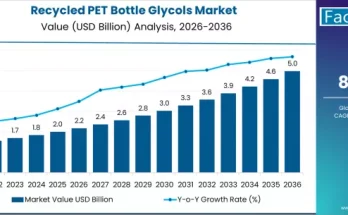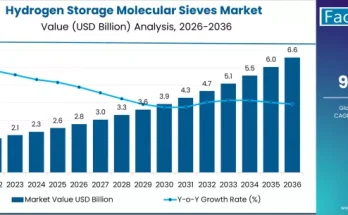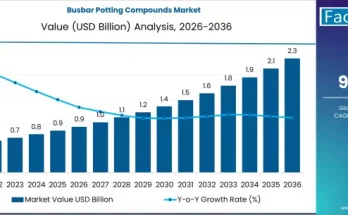In an era where infrastructure resilience and sustainability are top priorities, the Waterproofing Membranes Market is gaining considerable momentum. With expanding urban populations and increasing investments in construction—both new and refurbishment projects—the need for effective water protection solutions has never been more critical. Waterproofing membranes, which act as barriers to prevent water ingress in buildings and infrastructure, are becoming central to the global movement towards safer, more durable, and energy-efficient structures.
This market’s growth reflects the rising demand for long-lasting protection against moisture damage, particularly in applications such as basements, roofs, walls, tunnels, and water management systems. As the construction industry pushes for advanced and eco-friendly materials, waterproofing membranes have emerged as essential components of both commercial and residential projects.
Market Overview
Waterproofing membranes are thin layers of waterproof material that are applied to surfaces to prevent water penetration. These membranes are used across a wide range of applications, from buildings and bridges to tunnels and water tanks. They not only protect structures from water damage but also enhance longevity and structural integrity.
The market is driven by a combination of technological advancements, regulatory requirements, and consumer awareness about moisture control and building safety. With increasing construction activity worldwide and growing concerns over climate change-related events such as flooding, the demand for efficient waterproofing solutions is on the rise.
The market is broadly categorized based on product type, material type, application, and region.
Waterproofing Membranes Market Analysis
By Product
Waterproofing membranes are available in two primary forms: liquid-applied membranes and sheet-based membranes.
- Liquid-applied membranes are gaining popularity due to their ease of application, flexibility, and seamless finish. They are commonly used in complex structures where precision and adaptability are required.
- Sheet-based membranes, on the other hand, offer uniform thickness and strong physical durability. These are often used in large-scale construction projects where the mechanical strength of the membrane is a key consideration.
The choice between these types depends on the specific use case, cost considerations, and required performance characteristics.
By Material
The market features a wide variety of materials, including bituminous, polymeric, and others.
- Bituminous membranes are among the most traditional types, known for their excellent adhesion and weather resistance. They are commonly used in roofing and below-ground structures.
- Polymeric membranes—such as thermoplastic polyolefin (TPO), polyvinyl chloride (PVC), and ethylene propylene diene monomer (EPDM)—are increasingly being adopted due to their flexibility, chemical resistance, and environmental friendliness.
As sustainability becomes a priority, eco-friendly and solvent-free membranes are witnessing higher demand, especially in regions with strict environmental regulations.
By Application
- Waterproofing membranes are widely used in:
- Roofing
- Building structures (walls, basements, terraces)
- Tunnels and bridges
- Water and waste management facilities
Among these, roofing remains the most dominant application segment due to its critical role in protecting buildings against rainwater infiltration. However, the tunnel and infrastructure segment is gaining momentum with rising global investments in transportation networks.
Regional Insights
The global waterproofing membranes market demonstrates varied trends across regions, reflecting local infrastructure priorities, climate conditions, and regulatory landscapes.
North America
North America remains a leading region, driven by a mature construction sector and a strong focus on infrastructure resilience. The push for energy-efficient and green buildings in urban areas further supports market expansion. Additionally, frequent weather extremes have prompted the adoption of advanced waterproofing solutions in both commercial and residential settings.
Europe
Europe follows closely, with widespread emphasis on sustainable construction practices and compliance with EU regulations. Government-led initiatives promoting eco-friendly building materials and renovation of aging infrastructure are significant contributors to regional growth. Technological innovation and demand for recyclable and VOC-free membranes are also shaping the European market.
Asia-Pacific
Asia-Pacific is emerging as the fastest-growing market. Rapid urbanization, large-scale industrial projects, and government investments in smart cities and public infrastructure are key drivers. Countries like China and India are witnessing surging demand for waterproofing membranes, particularly in housing and transport sectors. Moreover, the region’s diverse climate conditions—from heavy rainfall to humid tropical zones—make waterproofing solutions a critical requirement.
Latin America and Middle East & Africa
In Latin America and the Middle East & Africa, the market is developing steadily. Infrastructure expansion, urban development, and increasing awareness about moisture protection are pushing demand. These regions present promising opportunities for international players looking to expand their footprint.
Key Trends & Forecast
Several trends are shaping the waterproofing membranes market, pointing toward sustainable innovation and diversified application:
- Sustainable Materials and Green Construction
With environmental concerns becoming mainstream, there is a shift toward low-VOC and recyclable membranes. Manufacturers are innovating to develop solvent-free and bio-based alternatives, aligning with green building certification requirements.
- Smart Waterproofing Systems
Integration of sensors and digital monitoring with waterproofing systems is an emerging trend. These smart membranes can detect leakage, temperature changes, or membrane failure, enabling proactive maintenance and improved performance.
- Prefabricated and Modular Construction
The rise of modular construction is accelerating the need for pre-applied waterproofing membranes, which can be installed off-site and ensure better quality control. This trend is especially relevant in urban developments where speed and efficiency are crucial.
- Renovation and Retrofitting Projects
Aging infrastructure in developed economies is creating a market for waterproofing solutions in retrofitting and restoration. Membranes that are easy to install without extensive structural changes are seeing high demand in these applications.
- Increasing Public and Private Investment
Government-led infrastructure programs, public-private partnerships, and increasing foreign direct investments (FDI) are fueling demand for waterproofing systems across highways, tunnels, bridges, and water management facilities.
Applications & End-Use Outlook
The waterproofing membranes market serves a wide range of sectors:
- Construction and Real Estate: From homes to skyscrapers, moisture protection is vital for structural safety and energy efficiency.
- Infrastructure and Transport: Tunnels, subways, and bridges require durable waterproofing to withstand environmental stress.
- Water Treatment and Storage: Waterproof membranes are critical in lining water tanks, canals, and landfills.
- Industrial: Facilities dealing with chemicals, oils, or high-moisture environments utilize heavy-duty waterproofing materials.
As industries grow more conscious of lifecycle costs, energy efficiency, and safety, the demand for reliable and sustainable waterproofing is expected to intensify.
Conclusion
The Waterproofing Membranes Market is evolving rapidly as construction paradigms shift toward resilience, sustainability, and innovation. These membranes are not just moisture barriers—they are now viewed as critical enablers of long-term performance, environmental compliance, and operational efficiency in buildings and infrastructure.
As urban populations expand and environmental challenges become more pressing, waterproofing will play a central role in ensuring the structural integrity and sustainability of the spaces we live and work in. For stakeholders across construction, infrastructure, and manufacturing sectors, understanding the dynamics of this market is essential to making informed decisions and seizing emerging opportunities.
For businesses and professionals looking to stay ahead, investing in advanced, environmentally responsible waterproofing solutions is more than a strategic choice—it’s a necessity.



